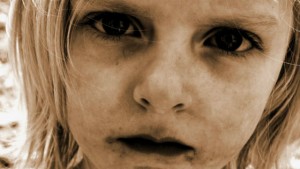Home » Commentary » Opinion » Children are the forgotten victims of family violence
· Daily Telegraph
 The National Children’s Commissioner’s Children’s Right Report has rightly called for a national focus on the violence and abuse of the most vulnerable Australians. According to the report, one in 12 children are physically abused by a family member, while almost a quarter of children have witnessed violence against their mother.
The National Children’s Commissioner’s Children’s Right Report has rightly called for a national focus on the violence and abuse of the most vulnerable Australians. According to the report, one in 12 children are physically abused by a family member, while almost a quarter of children have witnessed violence against their mother.
The report is welcome because in recent times the impact of abuse within families on children has slipped off the radar. This is despite the year-long national debate about family violence sparked by Rosie Batty’s appointment as the Australian of the Year in January.
Family violence is all kinds of abuse within the home, including the physical, sexual and emotional abuse and neglect of children. Yet when the great and good around the land observed White Ribbon Day last month, they specifically pledged their determination to stamp out domestic violence. This term refers specifically to intimate violence and other forms of abuse perpetrated by men against adult female partners.
No one questions how vital it is to protect women from abusive men. However, it is clear some people are comfortable talking about only some types of the abuse that occurs within families.
The feminists behind White Ribbon Day frequently talk about how gender inequalities and men’s discriminatory attitudes causes domestic violence. The Greens reckon it’s caused by Ken and Barbie and want a Senate inquiry into how children’s toys create gender stereotypes.
But the feminist lobby is uncomfortable talking about the factors that lead to the worst cases of child abuse and neglect. A range social problems from welfare dependence to drug and alcohol abuse to family breakdown creates the dysfunctional homes in which vulnerable children suffer maltreatment.
Discomfort with this topic is largely due to the correlation between single-mother families and the prevalence of child abuse. This goes against feminist belief in family diversity: the idea that all families —whether married, defacto or sole parent — are equally good for children. It also contradicts the cherished belief that the real problems in society are caused by male-dominated, ‘patriarchal’ institutions such as marriage and the traditional family.
Take the tragic case of the 10-month-old Penrith boy allegedly left under the shower by his mother’s boyfriend. The only white ribbons worn for this boy have been the bandages dressing the burns to 40% of his body.
Quite rightly, governments must do more to support victims of domestic violence and provide women with real opportunities to escape abusive relationships.
But many children also need rescuing, and aren’t, because child protection authorities are committed to the keeping all families together, no matter how dysfunctional, because they too have been infected by the feminist ideology
Taking a stricter approach to child protection would inevitably mean removing more children from dysfunctional single mother families, and thereby exposing the gap between the ideology and the reality.
Political correctness means the elites who dominate the discussion of abuse in Australian homes are only comfortable talking about the social problems that reinforce their own views.
Jeremy Sammut is a Research Fellow at The Centre for Independent Studies. His book The Madness of Australian Child Protection: Why Adoption Will Rescue Australia’s Underclass Children (Connor Court) was published this month.
Children are the forgotten victims of family violence